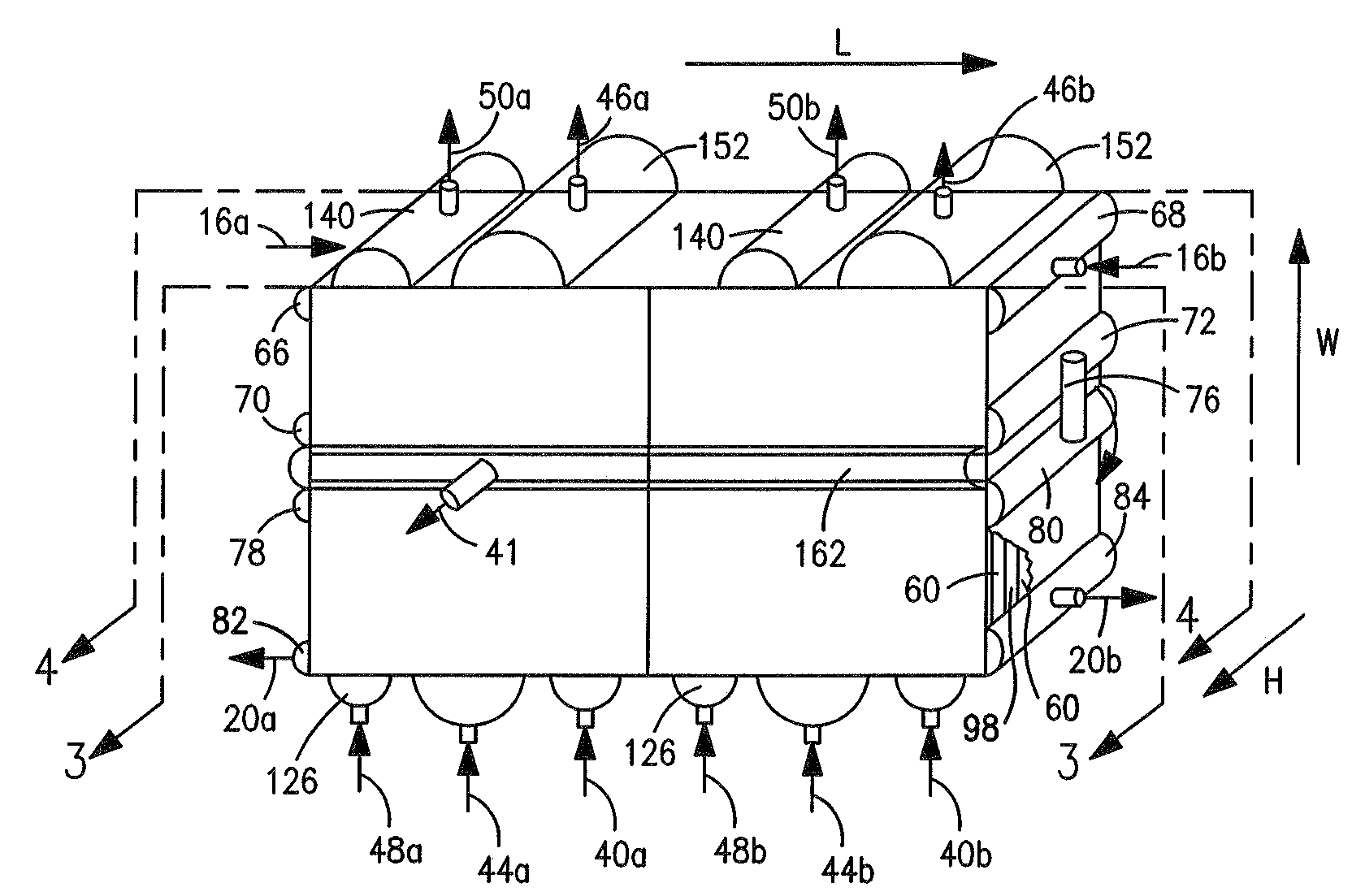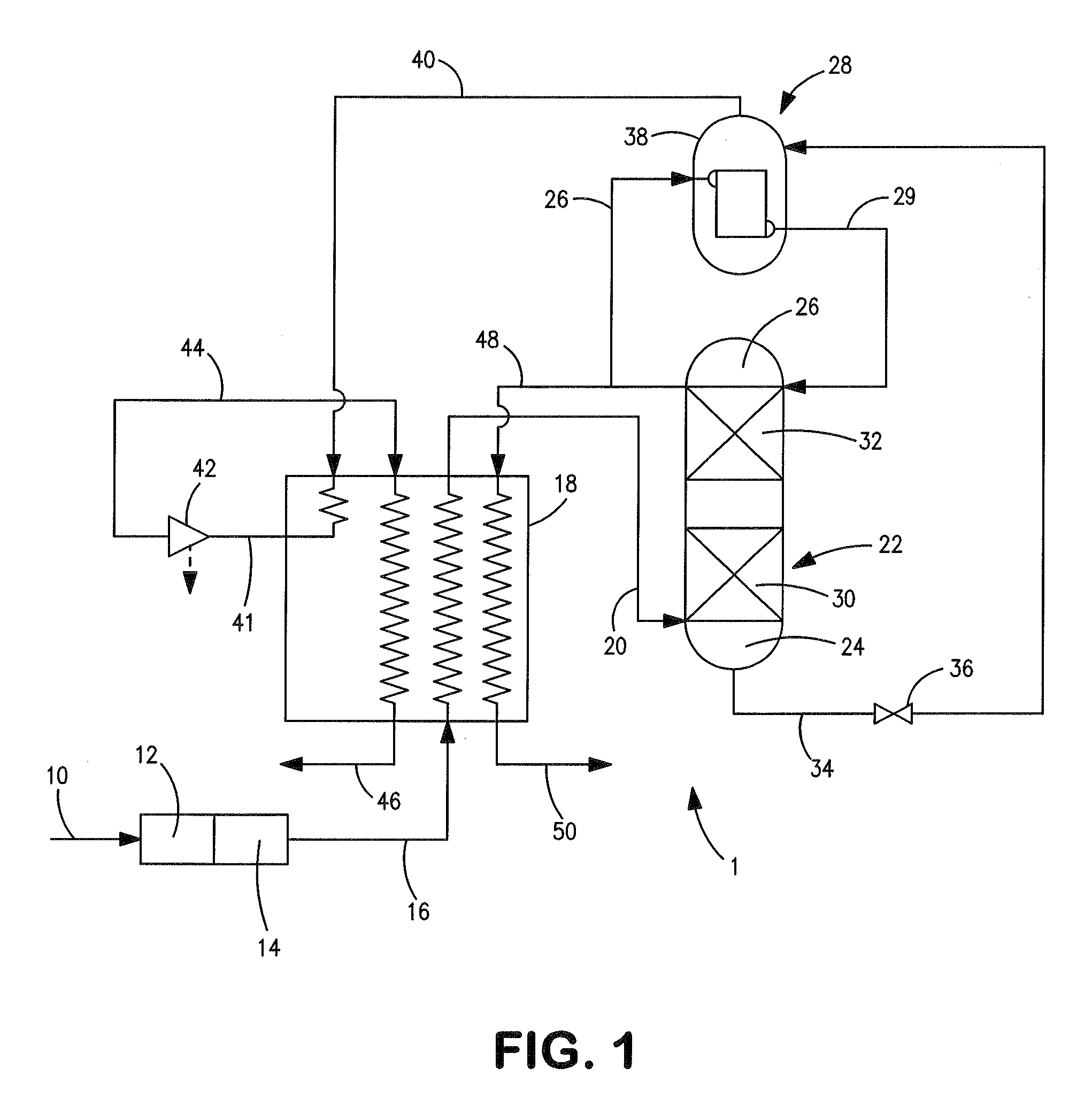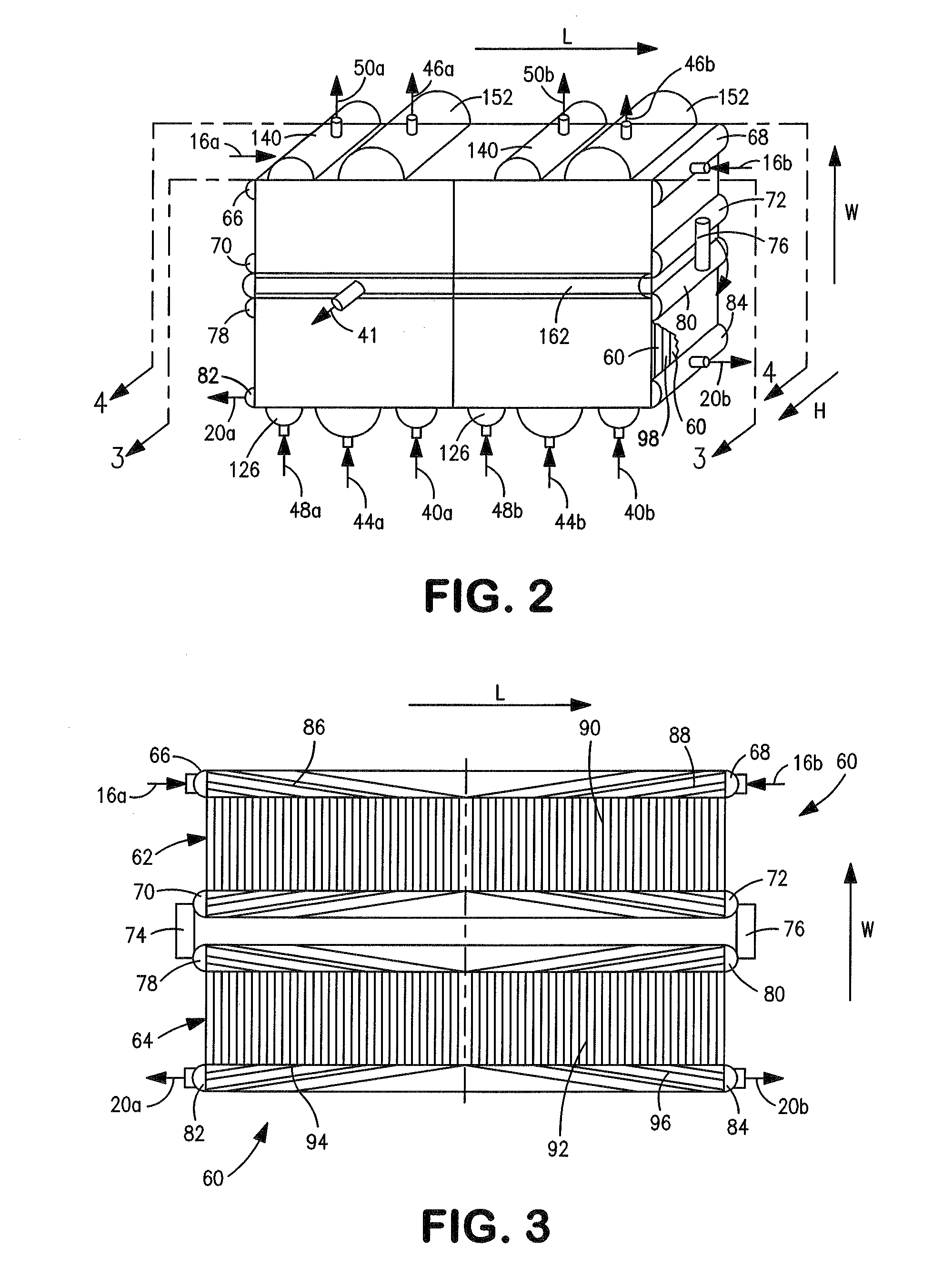Plate-fin heat exchanger having application to air separation
a heat exchanger and plate-fin technology, which is applied in indirect heat exchangers, lighting and heating apparatuses, laminated elements, etc., can solve the problems of increasing surface area inevitably at the expense of more frictional pressure drop, reducing heat exchange duty, and reducing heat exchange efficiency. , to achieve the effect of preventing an excessive pressure drop, reducing frictional pressure drop, and easy scaling
- Summary
- Abstract
- Description
- Claims
- Application Information
AI Technical Summary
Benefits of technology
Problems solved by technology
Method used
Image
Examples
Embodiment Construction
[0020]With reference to FIG. 1 an air separation plant 1 is illustrated that is used to generate nitrogen. Such an air separation plant is known as a nitrogen generator.
[0021]A feed air stream 10 is compressed at a compression unit 12 that may be a multistage compressor having inter-stage cooling between stages. The compressed and purified air stream is then introduced into a purification unit 14 that is well known in the art. Prepurification unit 14 that can be a temperature swing adsorption unit having beds of alumina or molecular sieve type adsorbent operating out of phase to remove the lower boiling components of the air such as water and carbon dioxide. The resultant compressed and purified stream 16 is cooled to at or near its dew point in main heat exchanger 18 and introduced as a compressed, purified and cooled stream 20 into a distillation column 22.
[0022]The introduction of compressed, purified and cooled air stream 20 into distillation column 22 initiates the formation of...
PUM
 Login to View More
Login to View More Abstract
Description
Claims
Application Information
 Login to View More
Login to View More - R&D
- Intellectual Property
- Life Sciences
- Materials
- Tech Scout
- Unparalleled Data Quality
- Higher Quality Content
- 60% Fewer Hallucinations
Browse by: Latest US Patents, China's latest patents, Technical Efficacy Thesaurus, Application Domain, Technology Topic, Popular Technical Reports.
© 2025 PatSnap. All rights reserved.Legal|Privacy policy|Modern Slavery Act Transparency Statement|Sitemap|About US| Contact US: help@patsnap.com



